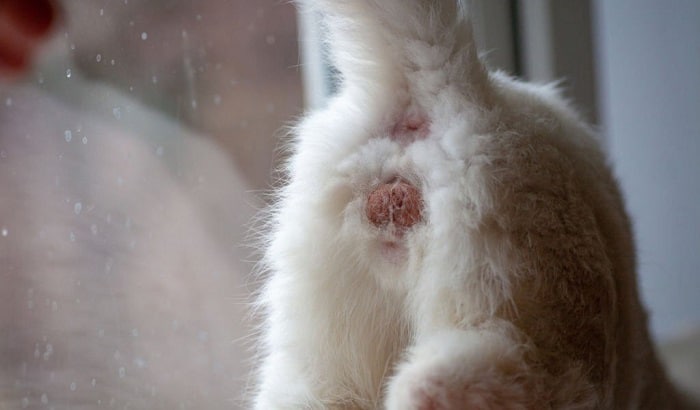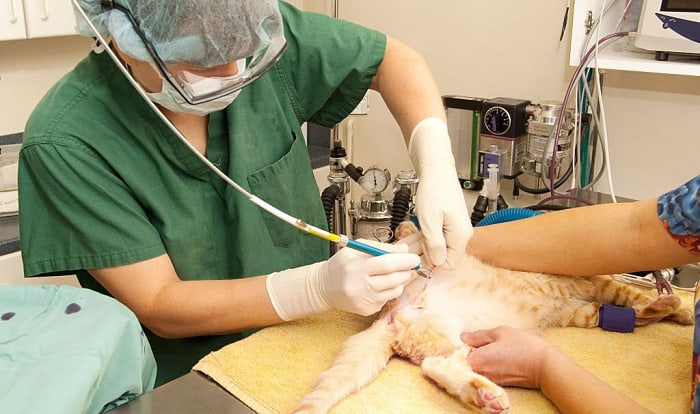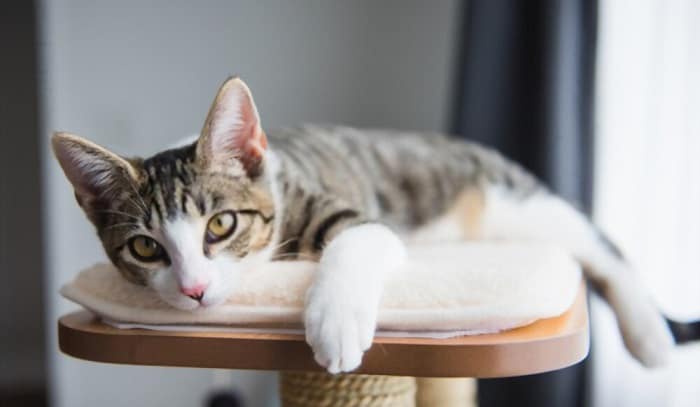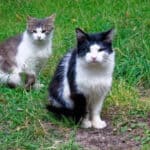Some cat owners prefer having their pets neutered for health and financial benefits. Be it avoiding unwanted litter or preventing behavioral issues like aggression toward other tomcats or (caused by) mating instincts; the procedure is a well-known option.
But this is sensitive for your fur friend, so you should know what to do before and after neutering a male cat. This involves ensuring they are healthy prior to surgery and allowing them to recover in a safe and comfortable place.
Table of Contents
Cat’s Life After Neutering
When the recovery period is over, you and your cat can start adjusting to how you all were before the procedure. But naturally, there are permanent changes to your cat.
For those unfamiliar, you may wonder, “what does a male cat look like after being neutered?”
The most glaring difference is the lack of testicles. Your cat may be uncomfortable at first, unaccustomed to the feeling.
- Let it adjust, carefully monitoring should it show signs of distress.
- Attend to its needs right away, keeping it comfortable and entertained until it begins to be familiar with its “new” body.
Do Male Cats Calm Down After Being Neutered?
The answer is yes, mainly because the testicles that produce testosterone have been removed. Testosterone controls, among others, the male cat’s aggression and other behaviors.
Neutered cats tend to be more affectionate and would relate well with other male cats than their unneutered counterparts. They make better pets and are easier to live with.
They will no longer have an interest in going out to roam around to look for a mate, thus minimizing their population.
Additionally, the procedure reduces possible testicular cancer or prostate problems. They are less likely to roam and be exposed to viruses as well as get into fights with sick cats.
Also, as they are less active, encourage your pet to continue activities that burn calories so it won’t grow too large from staying dormant.
Is Neutering Necessary?
Before letting your cat undergo this procedure, evaluate first if it is important for you and your pet. Here’s what you should know:
- Neutering is the removal of your male cat’s testicles. This involves sterilization and elimination of male hormones. The former means your pet can no longer breed or produce kittens. Take this into consideration before pushing through the procedure.
- Male hormones, on the other hand, are associated with testosterone which controls sexual behavior. You can notice the differences in a male cat before and after neutering. The procedure helps reduce aggressiveness towards other felines.
- Your neutered cat can also continue spraying or marking their territory. But unlike intact males with pungent or strong-smelling urine, castrated males’ urine becomes less odorous.
- There are also impressions that neutered cats become fat. But this is only because they are no longer too engrossed in fighting, mating, and roaming often.
Take note of all these factors as it is your responsibility towards your male cat, before and after neutering, to keep it happy and healthy.
Recovery After Neutering
A neutered cat after surgery will experience post-operative side effects.
- As it is still under the effects of the anesthetic, your cat may suffer or go through nausea, lethargy, vomiting, and loss of appetite, among others.
- They may also have difficulty relieving themselves. Remember that your cat is in pain during this time. It is important to note that these symptoms may last within 24-48 hours.
These are common, so you don’t have to stress out when any of these happen. You need to keep calm and follow the post-operation guidelines the veterinarian sent you.
Upon arriving home, bring your cat to a dark and quiet area for aftercare. Make sure there is no one and nothing to disturb your feline friend.
After all, it is still sensitive and uncomfortable from the procedure.
Here are the crucial steps you need to take in the first 24 hours:
- Place your cat’s food and water bowls and the litter box close to their resting area. This is to prevent them from exerting effort in moving. Their incision is still fresh, so any sudden movements can cause injuries.
- Let them eat only in small portions to minimize vomiting.
- The litter box should contain torn newspaper strips only. Using regular litter can stick to the incision part, and this must be avoided.
- Monitor them such that they won’t move around so much. This includes jumping to elevated areas, climbing stairs, and wandering outside. Wait for a week before letting your cat do these and other strenuous activities.
During the recovery period, it is essential to pay attention to the incision. Observe for possible signs of infection. Inform your veterinarian immediately when you notice any or all of the following:
- Swelling or redness at the incision site
- The incision site has reopened
- Pus, discharge, or blood coming from the incision site
Therefore, your cat must keep its cone for 5-7 days. The cone inhibits it from licking the incision and unintentionally transferring bacteria.
You must alert the veterinarian as well if your cat begins having difficulties in relieving itself. Your pet will undergo examination and treatment should it be necessary. It is always best to trust the knowledge and expertise of the veterinarian.
Neutered or Unneutered?
Before taking home a male cat, one deciding factor is whether or not you prefer a neutered one or not. What then are the differences between a neutered vs unneutered male cat?
In terms of the physical appearances, here are the contrasts:
- Unneutered: the presence of two distinct testicles, bigger and more muscular in build, and large scent glands that produce strong and smelly urine
- Neutered: no visible testicles, slimmer and less muscular, and less strong-smelling urine
In terms of behavior, here are where they differ:
- Unneutered: extremely territorial, always have the urge to spray and the desire to roam looking for a mate, tends to be more aggressive towards other males, and unhygienic
- Neutered: less likely to spray, little to no desire to roam, less aggressive towards other males, and keep themselves clean often.
Conclusion
Deciding whether or not to neuter your male cat is tough. It requires assessment, especially if you want to breed it. A veterinarian can always help with the decision and during the process should you push through.
As a pet owner, it is your responsibility to know the dos and don’ts before and after neutering a male cat. The recovery period is especially crucial to ensure your cat is healthy, comfortable, and happy.
Furthermore, there is a little information about neutering like the cost, the difference between spay vs neuter if you needed!

I am Amy Sawy, a Doctor of Veterinary Medicine (DVM) graduate from the University of Kansas. y husband, Dr. Plummer, and I own a veterinary clinic in Phillipsburg, Kansas. In addition to my professional background, I am a devoted pet owner myself, with a household that includes dogs, rodents, and most notably, cats – a total of five felines in my home.
In 2020, I joined an organization as a professional writer, leveraging my experience and collaborating with my team to deliver the most valuable information for your cat’s care.















